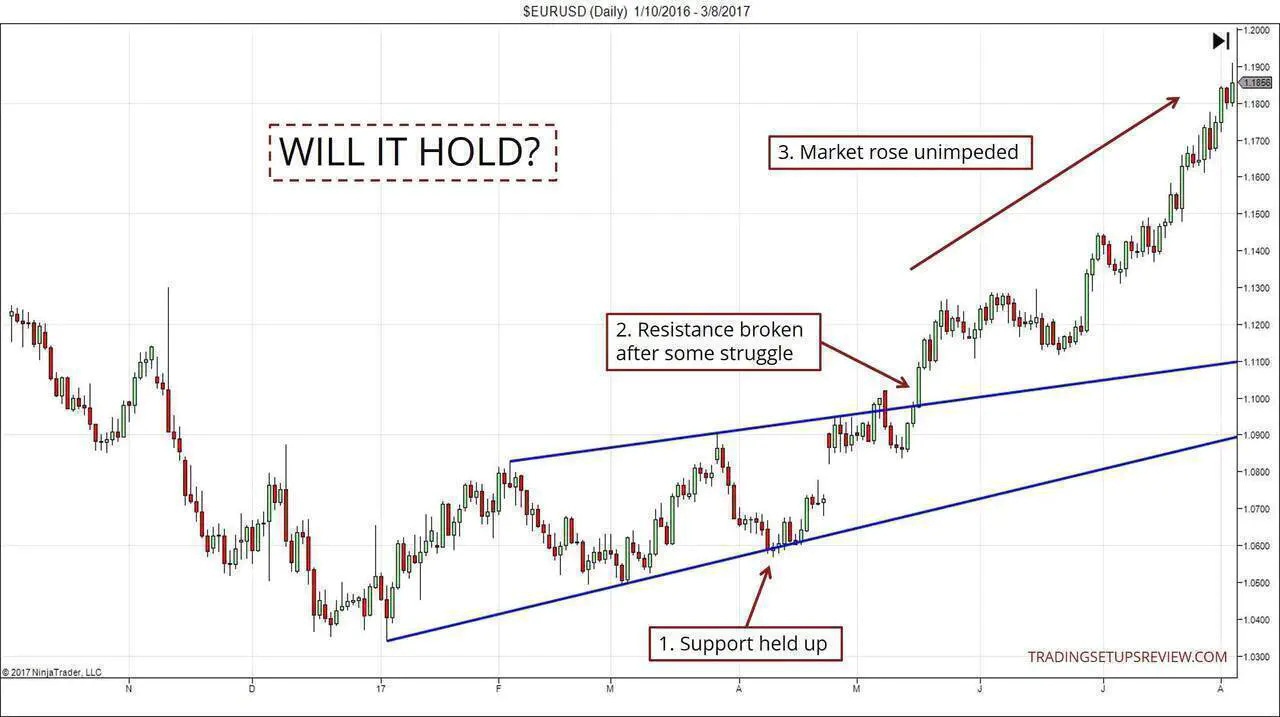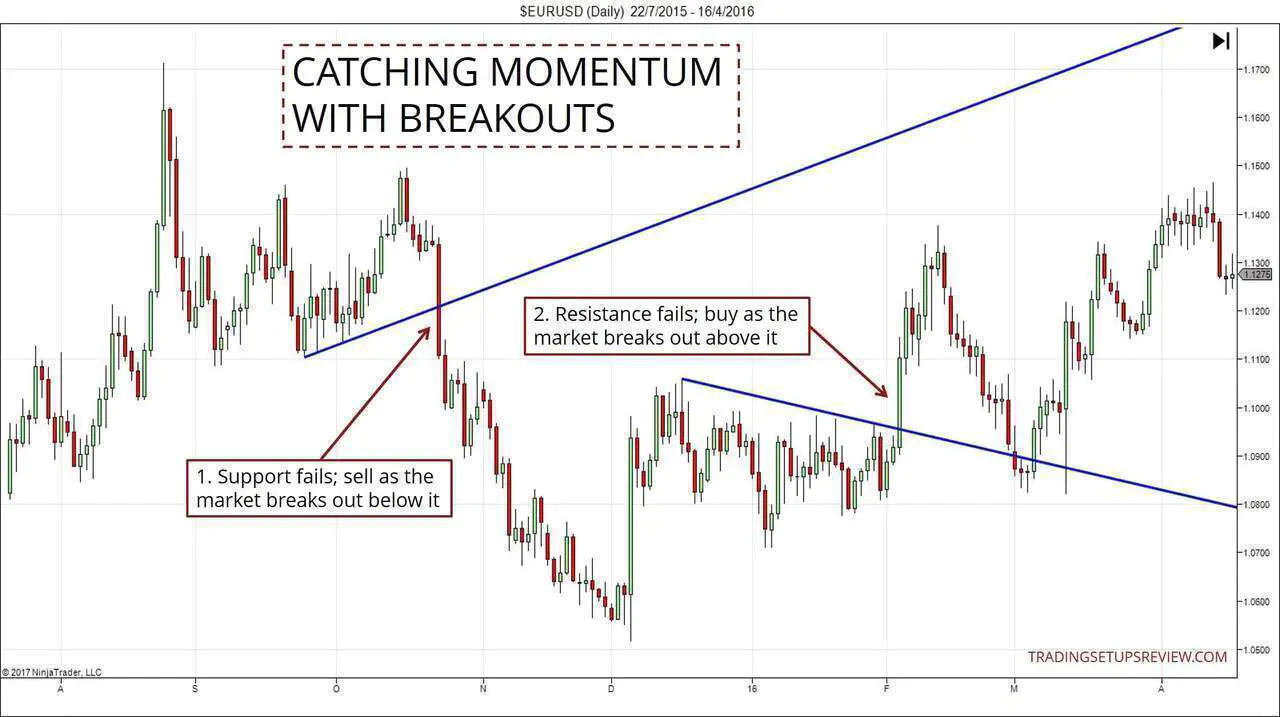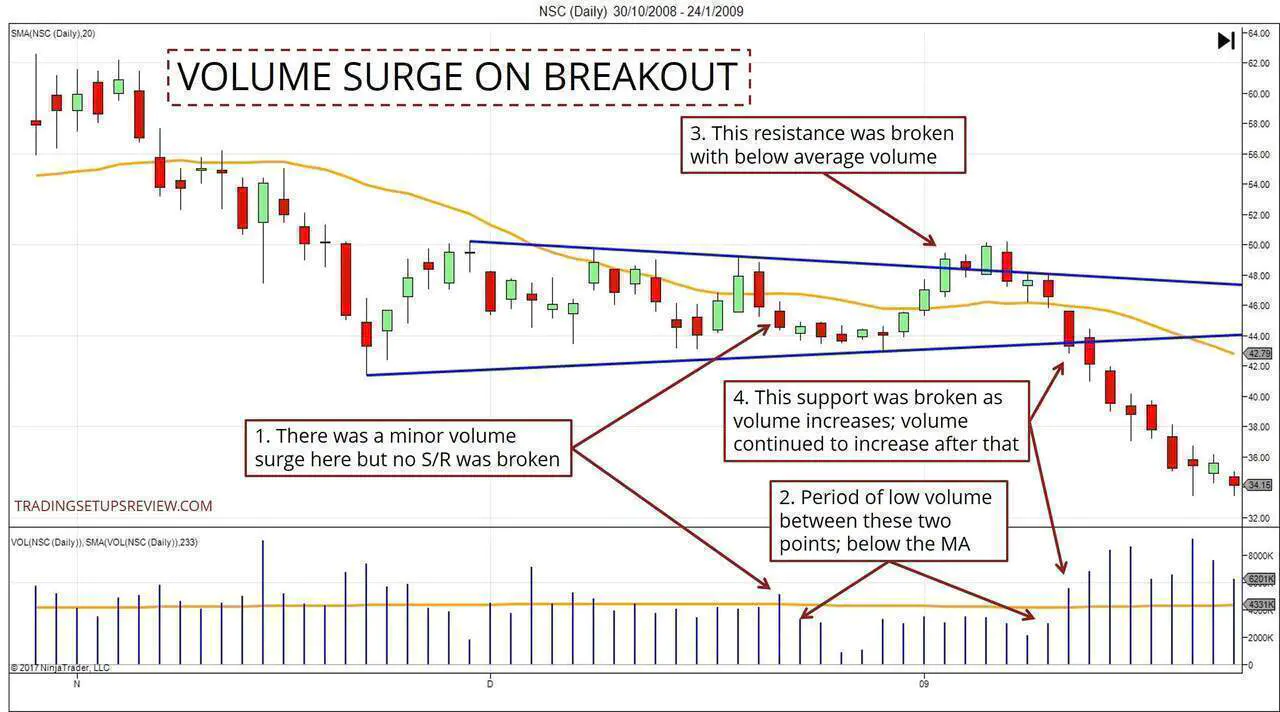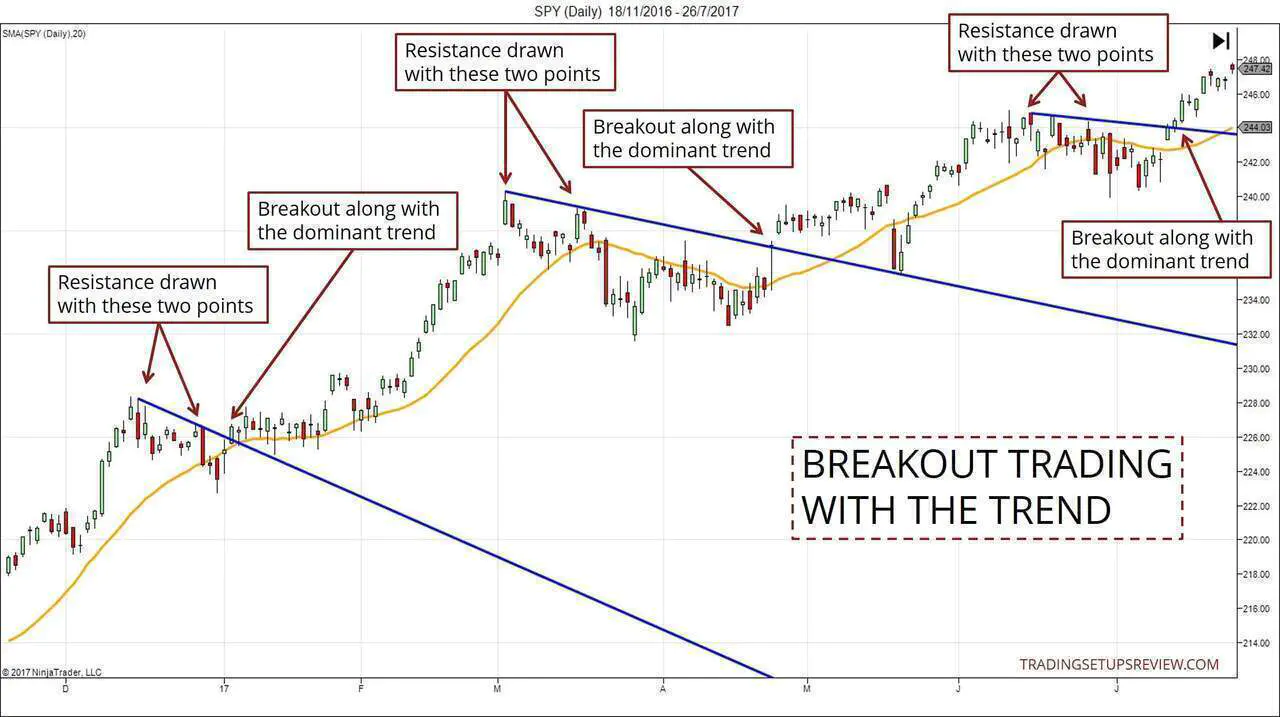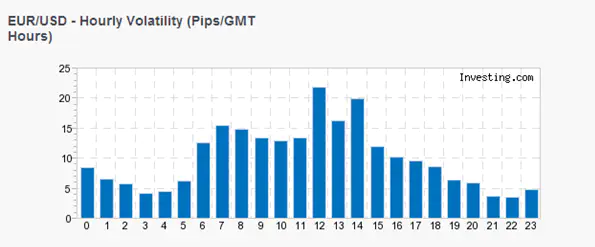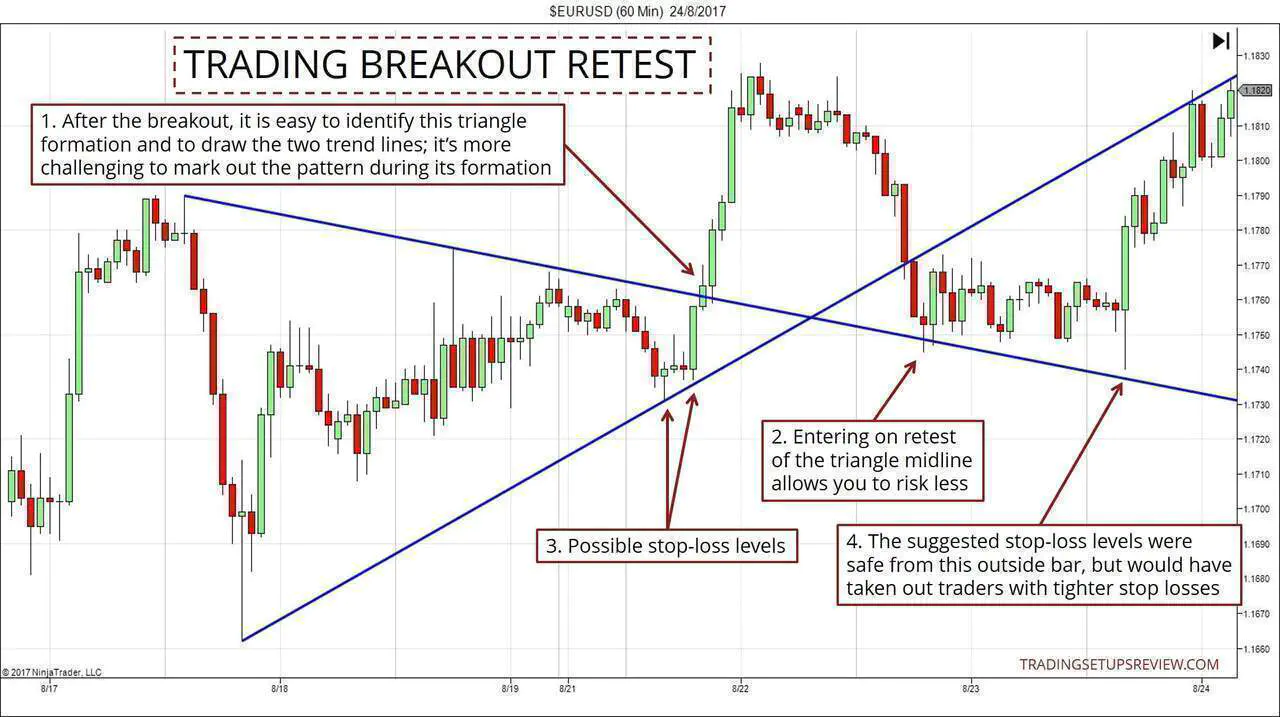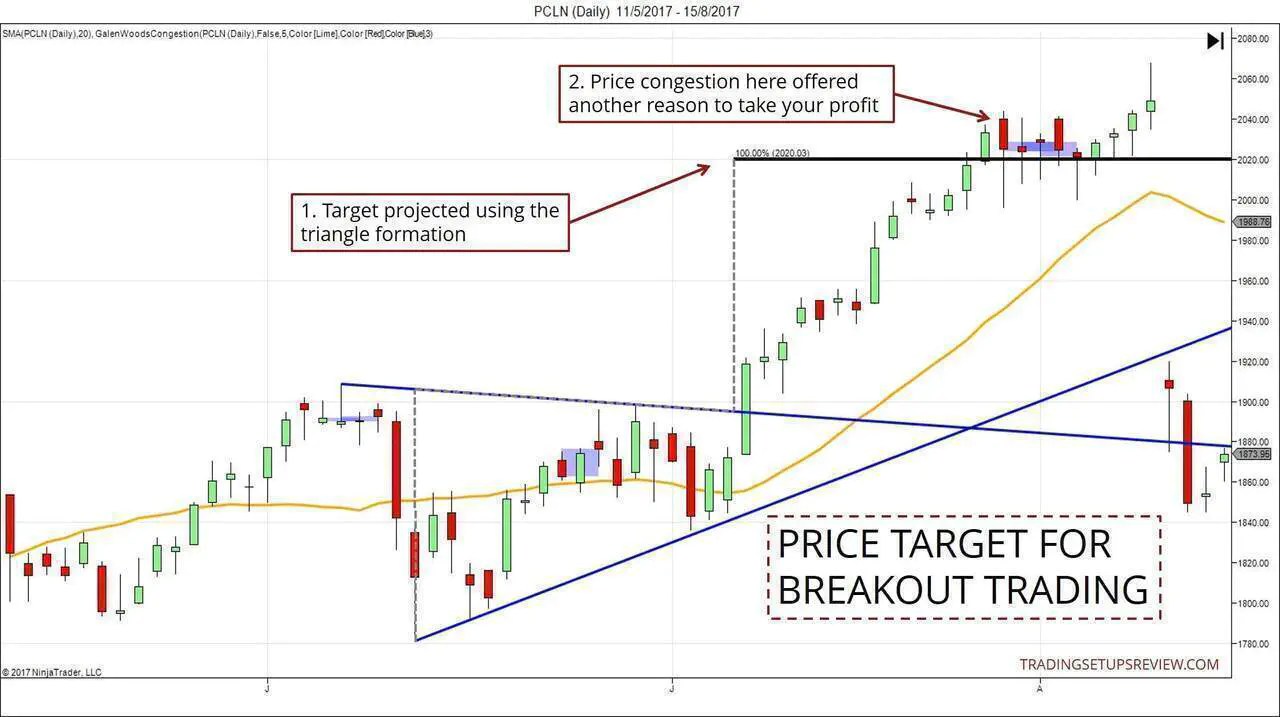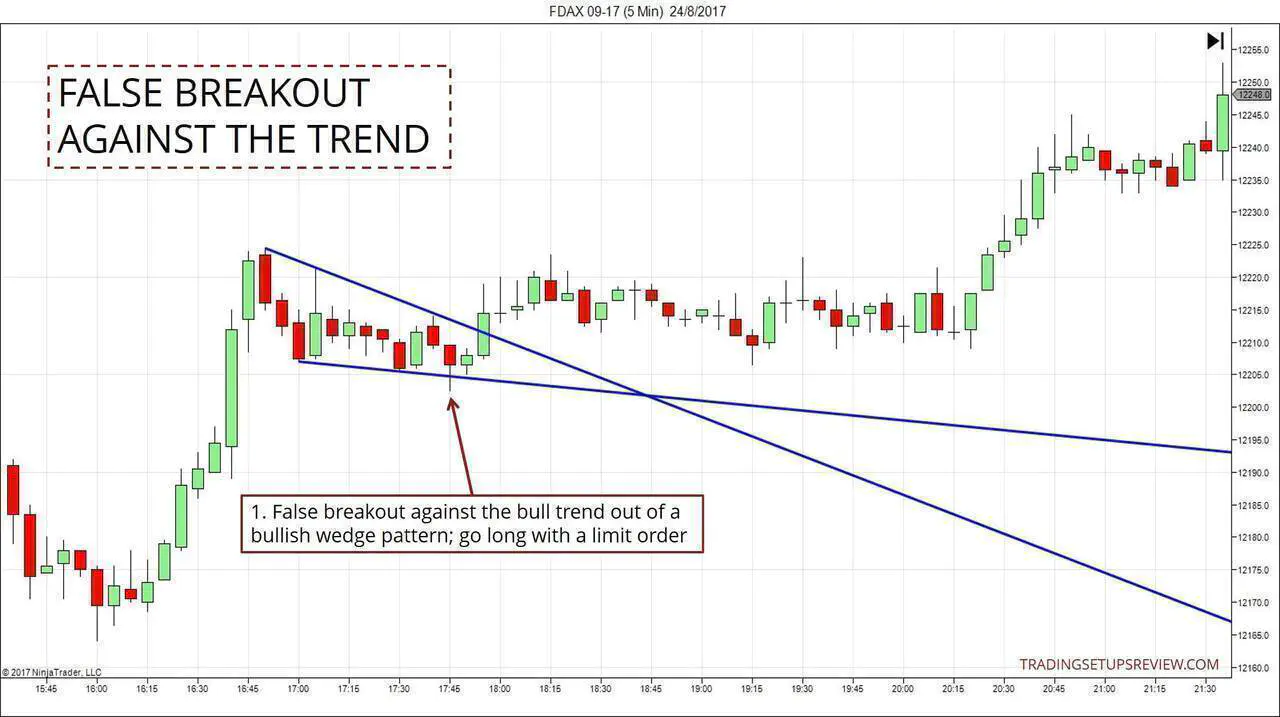7 Powerful Tips for Trading Breakouts
By Galen Woods ‐ 7 min read
Breakout trading leads to quick profits – when you get it right. Grasp the essential concepts of breakout trading together with these 7 powerful tips.
Trading breakouts is a popular trading method that captivates the attention of many new traders. It’s not surprising given that it throws up quick profits - when you get it right.
Trading a breakout is not as easy as it seems. Breakout trades look notoriously easy when you look at a chart after a breakout.
But as you observe the market for potential breakouts, things are less sunny. The experience of a breakout trader is often filled with false moves and whipsaws.
Here, you’ll find seven powerful tips to help you trade breakouts with less frustration.
But first, you must understand what a breakout trade is.
Basic Breakout Trading Concepts
Support and resistance is a core concept in price action trading.
Hence, an essential trading skill is the ability to tell if a support/resistance will hold or fail.
Breakout trading aims at making money when support and resistance fails.
- When a resistance level fails, you aim to buy as the market breaks out above it.
- When a support level fails, you aim to sell as the market breaks out below it.
Essential steps of a breakout trading strategy:
- Find a market trapped between a support and resistance. (Usually a trading range type pattern like a triangle or channel.)
- Wait for the market to break beyond the support or the resistance.
- Enter the market as volatility surges after the break.
Breakout trading uses only basic support and resistance as its premise. Hence, you can use this approach on any time frame (including intraday and daily).
Breakout trading is a form of momentum trading.
What this means is that you are:
- Waiting for momentum to join it.
- Reacting to and not predicting the market.
- Buying high and selling low (This might be uncomfortable for some traders.)
- Profiting from an increase in volatility
These insights set the groundwork for you to make the most out of the trading tips below.
Tips For Trading Breakouts
#1: Wait for higher volume to confirm a breakout
A surge in volume is one of the best ways to confirm a breakout. But it’s not just about an increase in volume.
Ideally, you want to see a period of low volume trading before a surge in volume.
In the chart example below, you’ll see a volume moving average (VMA) in the bottom panel. It helps to highlight the volume differences.
The light volume shows that the market is waiting for new significant information.
The volume surge is a sign that the wait is over and that the market has transited into an active phase.
A volume surge is not a strict criterion for breakout trading, but it does point to better trade quality.
#2: Trade breakouts in the direction of the trend
As a general rule, you should stick to breakouts that follow the prevailing trend.
A breakout trade can involve various patterns like a triangle, wedge, or rectangle.
But it can be simpler when you focus on breakouts in the direction of the trend.
All you need are two swing points that allow you to draw a support or resistance line against the trend.
The chart below shows this simple approach.
Breakouts offer an excellent way to join a trend after an elaborate pullback.
Note to Course Students: Works better if you use valid pivot highs to draw the resistance line. You can find similar examples in Volume 2 Chapter 5.2.5.
#3: Take advantage of volatility cycles
Every market has high and low volatility periods.
For intraday trading, you can uncover these cycles quickly. Simply analyze the average hourly range of your market.
Typically, a couple of hours account for the majority of a session’s range.
Once you are attuned to the volatility cycle, you can make use of it by:
- Looking out for trading ranges during low volatility periods
- Entering breakout trades during high volatility periods
Volatility tendencies on daily charts are harder to grasp. This is because they depend on fundamental drivers. E.g., Volatility might increase following a new product announcement.
Remember, spending more time on trading does not mean more profits. Instead, trading at the right time is what matters.
#4: Enter on Retest of Support or Resistance
If you like high probability trades, consider entering the market upon a retest.
This approach has two big advantages.
First, it depends on a confirmed support or resistance level. This leads to a higher probability setup.
Second, you can expect this strategy to exhibit less adverse movement. Hence, you have a sound basis to set a tighter stop-loss.
However, this method is challenging for an impatient trader. You need to wait for a pullback that may never occur.
Hence, you must be prepared to miss some highly profitable breakout trades.
#5: Have a predetermined exit plan
After a breakout, the market volatility increases. Hence, it’s essential that you have a clear exit plan that you can execute without hesitation.
To avoid hiccups, consider paper trading to hone your trade execution skills.
For Targets
A breakout trade is often based on a consolidating formation. E.g., price channel or triangle. Hence, the natural target is one projected using the same formation.
Note to Course Students: Find breakout setups by looking for overlapping congestion zones. (shown as blue boxes)
A volatile market often breaks out swiftly and snaps back just as fast. Hence, you should set actual limit orders. If you adopt a wait and see approach, you might give back the meaty part of the move.
Experienced traders can be more flexible and exit once the momentum falters.
Letting profits run without a fixed target only makes sense if you expect a new trend to form. E.g., breaking out of a significant price pattern that shows signs of accumulation.
For Stop Losses
The most conservative stop-loss is one placed at the opposite end of the trading range.
For a price formation covering a huge price range, this method takes on excessive risk. A volatility stop-loss is a more sensible approach.
Regardless of how you set your stop-loss, do not tighten your stop-loss to the breakout point too soon. You risk getting stopped out prematurely as retests of the breakout point are common. (See flipping of S/R.)
#6: Trade False Breakouts
As you learn how to trade breakouts, you will also gain insights into false breakouts.
Don’t waste the trading opportunities that false breakouts represent.
Here is a simple winning recipe for trading false breakouts.
Look for breakouts:
- From a minor price formation
- Against the trend
- That fail quickly
The chart above shows a false breakout with a bullish Pin Bar, a signature of failed breakouts.
For another false breakout strategy, take a look at Gimmee Bar. It combines Bollinger Bands with price patterns to trade false breakouts.
#7: Save time by scanning for breakout candidates
You can streamline your trading process by scanning for breakout candidates.
If your scanner allows, you can scan for chart patterns like flags, wedges, and channels.
You can also scan for stocks with decreasing volatility to add to your shortlist. For this, you can use Bollinger Bandwidth or falling ADX values. Refer to Scan 2 in this article.
Never set an automatic trade entry based on a scan. You must always review the charts individually to weed out the weak candidates.
Conclusion - Trading Breakouts
Breakout trading combines essential price action trading skills into a single approach. No price action trader can afford to ignore breakouts.
Due to its simplicity, breakouts take on many forms.
A breakout from a significant accumulation area is also a bullish reversal.
A breakout from a minor bull wedge triggers a retracement trade.
You need to understand these nuances because the larger context is always crucial. It gives you an idea of how you should proceed with the trade.
Should you let profits run or take small profits? Should you enter straight away or wait for a retest?
It depends on the context.
Patience and decisiveness are critical attributes of a breakout trader. You need patience during the low volatility period. But you must be decisive when the volatility explodes.
Luckily, having a well thought out trading plan helps. Together with the simple tips above, you now stand a much better chance as a breakout trader.
